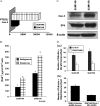Nitrative and oxidative stress in toxicology and disease
- PMID: 19656995
- PMCID: PMC2769059
- DOI: 10.1093/toxsci/kfp179
Nitrative and oxidative stress in toxicology and disease
Abstract
Persistent inflammation and the generation of reactive oxygen and nitrogen species play pivotal roles in tissue injury during disease pathogenesis and as a reaction to toxicant exposures. The associated oxidative and nitrative stress promote diverse pathologic reactions including neurodegenerative disorders, atherosclerosis, chronic inflammation, cancer, and premature labor and stillbirth. These effects occur via sustained inflammation, cellular proliferation and cytotoxicity and via induction of a proangiogenic environment. For example, exposure to the ubiquitous air pollutant ozone leads to generation of reactive oxygen and nitrogen species in lung macrophages that play a key role in subsequent tissue damage. Similarly, studies indicate that genes involved in regulating oxidative stress are altered by anesthetic treatment resulting in brain injury, most notable during development. In addition to a role in tissue injury in the brain, inflammation, and oxidative stress are implicated in Parkinson's disease, a neurodegenerative disease characterized by the loss of dopamine neurons. Recent data suggest a mechanistic link between oxidative stress and elevated levels of 3,4-dihydroxyphenylacetaldehyde, a neurotoxin endogenous to dopamine neurons. These findings have significant implications for development of therapeutics and identification of novel biomarkers for Parkinson's disease pathogenesis. Oxidative and nitrative stress is also thought to play a role in creating the proinflammatory microenvironment associated with the aggressive phenotype of inflammatory breast cancer. An understanding of fundamental concepts of oxidative and nitrative stress can underpin a rational plan of treatment for diseases and toxicities associated with excessive production of reactive oxygen and nitrogen species.
Figures






References
-
- Aggarwal BB, Shishodia S, Ashikawa K, Bharti AC. The role of TNF and its family members in inflammation and cancer: Lessons from gene deletion. Curr. Drug Targets Inflamm. Allergy. 2002;1:327–341. - PubMed
-
- Ankarkona MM, Dybukt JM, Bonfoko E, Zhivotovsky B, Orrenius S, Lipton SA, Nicotera P. Glutamate-induced neuronal death: A succession of necrosis or apoptosis depending on mitochondrial function. Neuron. 1995;15:961–973. - PubMed
-
- Aslan M, Cort A, Yucel I. Oxidative and nitrative stress markers in glaucoma. Free Radic. Biol. Med. 2008;45:367–376. - PubMed
-
- Behrman R, Butler A. Preterm Birth. Causes, Consequences, and Prevention. Washington, D.C: The National Academies Press; 2006. - PubMed
-
- Benoit M, Desnues B, Mege JL. Macrophage polarization in bacterial infections. J. Immunol. 2008;181:3733–3739. - PubMed
Publication types
MeSH terms
Grants and funding
LinkOut - more resources
Full Text Sources
Other Literature Sources

